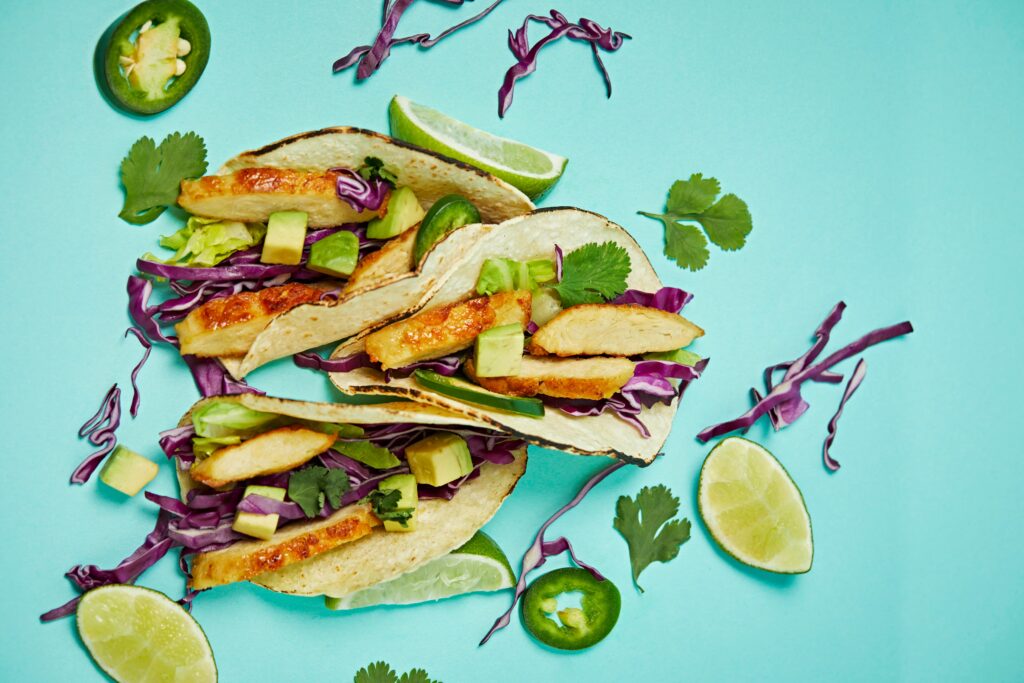Green light for cultivated meat in the US should inspire European leaders to invest
17 November 2022
Historic FDA decision paves the way for American consumers to access cultivated chicken. GFI Europe is calling on European leaders to ensure the benefits of cultivated meat are felt here too.

For the very first time, the United States Food and Drug Administration (FDA) has given the green light to a cultivated meat product as part of the agency’s pre-market review process.
UPSIDE Foods has successfully completed FDA’s rigorous pre-market safety review for its cultivated chicken, demonstrating that it is as safe as conventional chicken. This historic milestone will pave the way for consumers to access these products in restaurants and retail across the country.
UPSIDE Foods will now be able to move onto the standard process, comparable to what conventional chicken products follow, to ensure the safe production and handling of its chicken, including securing a United States Department of Agriculture grant of inspection.
Having successfully completed FDA’s pre-market evaluation, UPSIDE Foods’ cultivated chicken is now closer than ever before to becoming available to meat-lovers who want chicken made more sustainably.

Seth Roberts, Policy Manager at the Good Food Institute Europe, said: “This milestone announcement sends a strong message around the world that cultivated meat will be part of a more sustainable food future.
“Cultivated meat has the potential to help satisfy growing global demand for meat, while reducing the environmental impacts of our food system.
“As COP27 draws to a close, European leaders should be investing in climate solutions like cultivated meat – just as they’ve supported renewable energy – to ensure the benefits are felt here in Europe.”
What is cultivated meat?
Cultivated meat is exactly the same as the beef, pork, chicken and seafood people enjoy eating today – but made in cultivators (like the fermentors used for brewing beer) instead of farming animals.
How is it made?
Cultivating meat is similar to growing plants from cuttings in a greenhouse, which provides warmth, fertile soil, water and nutrients. It involves taking a small sample of cells from an animal and growing them in a fermentor, similar to those used for brewing beer. This supports the same process that happens inside an animal by providing the warmth and basic nutrients needed to produce meat – water, proteins, carbohydrates, fats, vitamins and minerals. The result is an abundance of meat, nutritionally identical to conventionally produced meat, but made in a more sustainable way.
Why do we need it?
Animal agriculture already causes 20% of global greenhouse gas emissions – equivalent to all the planes, trucks, cars, trains and ships on Earth. Global demand for meat is forecast to almost double by 2050, and we simply don’t have the land, water or climate stability to scale up existing methods of meat production to meet that demand.
Compared with conventional beef production, research shows cultivated meat made using renewable energy could reduce climate emissions by up to 92%, reduce air pollution by up to 93%, and use up to 95% less land – creating space for more sustainable farming, and avoiding issues such as deforestation. The same study found cultivated chicken made with renewable energy could reduce climate emissions by 17%, reduce air pollution by up to 29%, and use up to 63% less land.
In Europe and around the world, the majority of antibiotics are fed to farmed animals – fuelling the antimicrobial resistance that caused 1.2 million deaths in 2019. But cultivated meat production is antibiotic-free – helping to protect life saving drugs.
Cultivated meat in Europe
Dutch scientist Mark Post unveiled the first cultivated beef burger in London in 2013, and there are now more than 30 companies across Europe working on cultivated meat.
Research by GFI Europe has revealed a growing awareness of cultivated meat in major markets, with 65% of Spaniards, 55% of Italians, 57% of Germans and a third of French people already saying they were willing to buy it when it becomes available in Europe.
With large numbers of those surveyed believing cultivated meat would have a positive impact on the environment, the study found 38% in France, 56% in Germany, 58% in Italy and 68% in Spain wanted governments to support this new way of producing meat.
Europe’s regulatory process
Before a cultivated meat product can be sold in Europe, it needs to be approved by regulators in a process governed by the Novel Foods Regulation. Once EU regulators approve a cultivated meat product, it can be sold across all 27 EU countries. The approval process will include a thorough and evidence-based assessment of the safety and nutritional value of cultivated meat and is estimated to take at least 18 months.
The UK government has a similar regulatory framework in place for the assessment and authorisation of cultivated meat as a novel food, led by the UK Food Standards Agency.
GFI Europe works with policymakers to encourage a robust, clear, and evidence-based regulatory process across Europe. We are not aware of any applications for pre-market authorisation of cultivated meat having been made anywhere in Europe to date.
